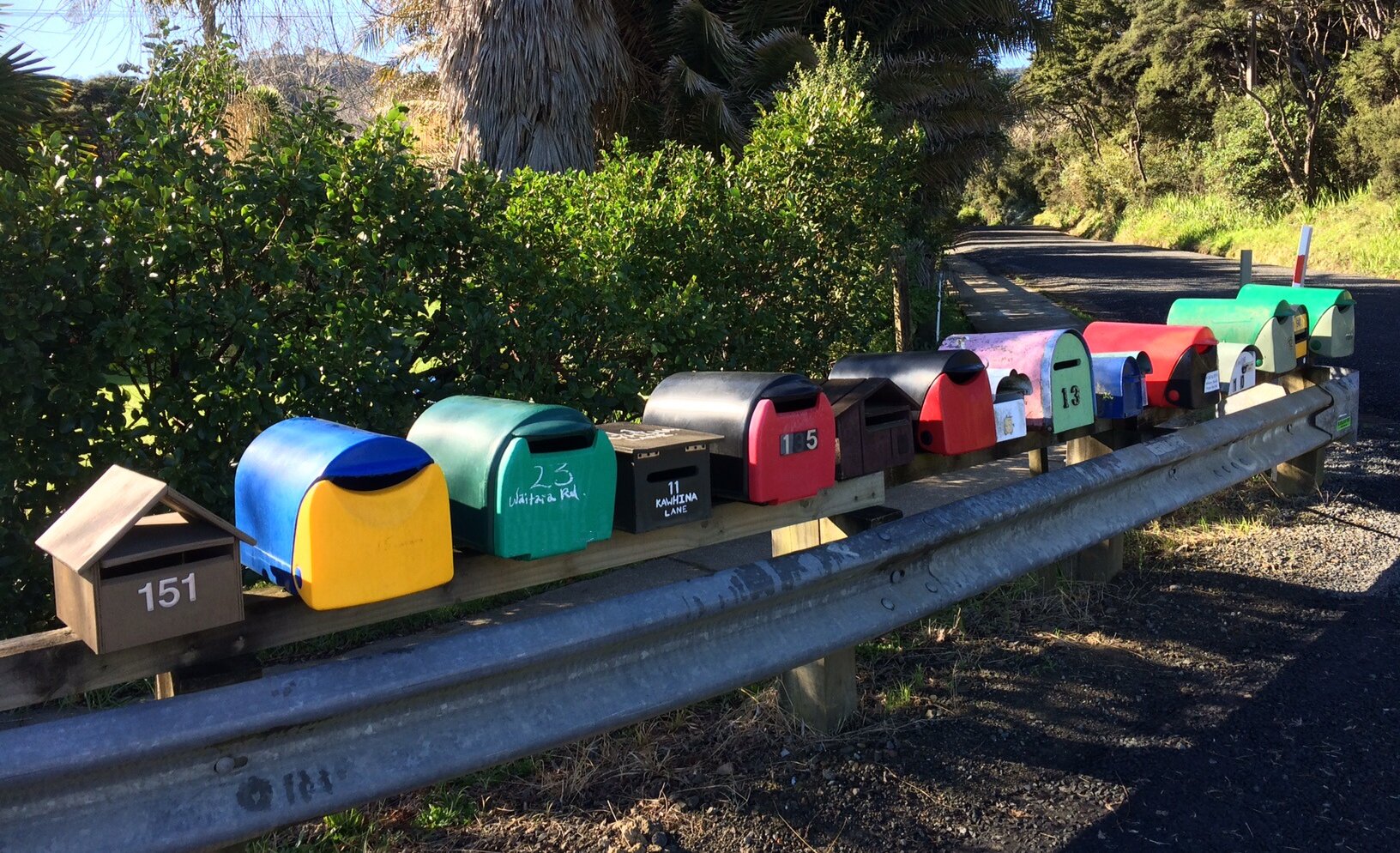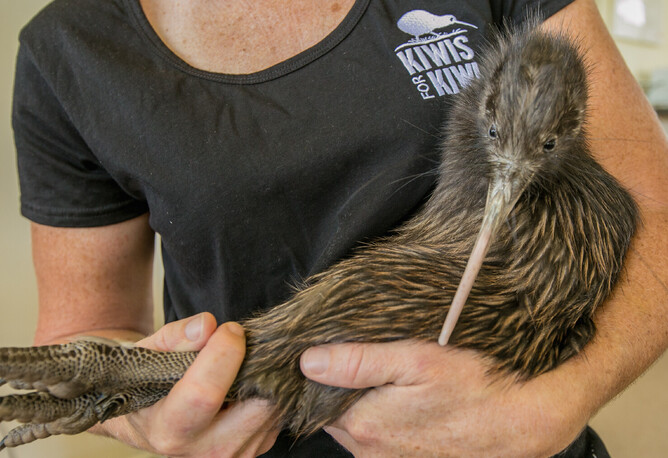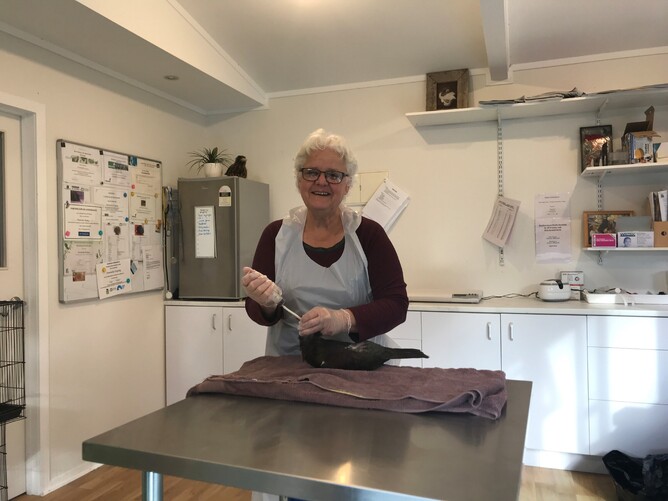The Department of Conservation has issued two media releases this week acknowledging the work and success of some of our local conservation organisations, namely Project Kiwi, Rings Beach Wetland Group and Kuaotunu Bird Rescue.
For a small community such as ours to be mentioned in the national media twice in one week is a great acknowledgment of the efforts of our local conservation heroes.
Kiwi confirmed in Coromandel reserve
Conservation groups on the central east coast of the Coromandel Peninsula are marking a major success, with confirmation of a population kiwi in a scenic reserve in the settlements of Matarangi and Kuaotunu.
Representatives from Project Kiwi and Rings Beach Wetland Group spent several consecutive nights in the reserve through June conducting audio monitoring for kiwi calls - essentially sitting quietly and recording kiwi calls, noting time, sex, distance and direction of the calls between 6pm and 8pm.
Dave Fitzgerald, the Secretary of Rings Beach Wetland Group, says the confirmation of the kiwi is the culmination of a long period of commitment and work by volunteers and supporters.
“We’re really excited – it’s very encouraging. It really shows the efforts of a number of people over many years is really paying off.”
He was involved in the monitoring and says the number of calls gradually increased over the course of the monitoring – with female birds heard responding to their male counterparts on the second night.
“We’re presuming there are at least two breeding pairs in there,” he says. “We noticed on one night an old pine tree stump which had been heavily carved at by kiwi, and kiwi droppings around that – they’d been looking for insects.”
Project Kiwi spokesperson Paula Williams says the confirmation kiwi are in the reserve is significant on numerous levels.
“It shows the reserve is suitable habitat for kiwi and kiwi have arrived of their own volition,” she says.
“We will conduct surveys in this reserve over the next two years to collect baseline data, but my expectation is the data will show birds are living in the reserve, not passing through.”
She says the strong likelihood breeding pairs are among the reserve’s kiwi population is a particularly positive sign.
“Breeding pairs also tell us the habitat is good enough in terms of year-round water supply and food source for a pair to inhabit and raise chicks. Pairs also help anchor a population, so it is likely the reserve will retain some of its wandering juvenile kiwi and the population will self-seed.
“Breeding pairs mean baby chicks and present us with the knowledge and the challenge to provide a level of predator control where they will flourish and go on to breed too,” she says.
The reserve’s new status as a habitat for our national bird will connect the Kuaotunu and Whangapoua Forest kiwi populations, she says.
Chris Twemlow, a Ranger with the Department of Conservation’s Coromandel District, says the confirmation of the kiwi are in the reserve demonstrates the value of community groups’ conservation effort.
“Conservation volunteers put in a huge amount of work and make contributions the wider public doesn’t always see. We’re delighted to see such a great result as this illustrates the power of sustained collaborative effort.”
People can find out how to support the work of the Rings Beach Wetland group by calling Carrie Parker (867 1299 or 027 367 1299), Dave Fitzgerald (869 5920 or 021 174 0721), or emailing ringsbeachwetlandgroup@gmail.com.
Republished courtesy of the Department of Conservation
Bird rescue a community effort
Annemieke Kregting has been described as a fantastic resource and supporter of birds in the Coromandel, saving and rehabilitating over 2000 birds at Kuaotunu Bird Rescue Trust.
When she first arrived in New Zealand from Holland in 1981, qualified vet nurse Annemieke Kregting was not particularly keen on birds.
Using the Yellow Pages to look for work, she found a role in the Auckland suburb of Lynfield, working for a veterinarian who had Dutch immigrant parents.
“Unbeknown to me, he was an avian specialist – for pets, as well as wild birds,” she says.
“I was slowly introduced to avian wildlife, as well as birds as pets. Initially I wasn’t interested in birds at all. All those feathers, claws and beaks – no thanks!”
But she grew increasingly involved in caring for birds through avian surgery work, x-rays and diagnostics. Linking with a bird rehabilitation facility in Green Bay, she learned more about the rehabilitation side of working with wild birds from a staff member she struck up a friendship with.
Fast-forward 30-odd years, and her interest in and knowledge of birds has grown significantly, as she deals with saving and rehabilitating birds through her work at Kuaotunu Bird Rescue Trust (KBRT), on the central east coast of the Coromandel Peninsula.
Her facility, a registered wildlife care operation, is the only bird rehabilitation site on the peninsula, and has dealt with an estimated 2300 birds over the last 20 years. This couldn’t have happened without the help of her husband Ben, and the Kuaotunu community, she says.
Ironically, when she moved to Coromandel in the early 2000s, she had no intentions of setting up as a bird rescuer, and was focussed on raising her family.
“But people just kept bringing birds to me”, she says.
“I think the first ever bird to arrive here was a little duckling, and someone found it, and didn’t know what to do. And then a penguin arrived, and then another penguin…and soon enough my laundry was filling up!”
The breadth of species she’s dealt with is remarkable – from common birds to rare and iconic species like kiwi, kereru and albatross, and recently, a giant petrel who required “lots of work, and had lots of stink”.
“You name a bird, and it’s probably been here! We get everything.
“It grows on you,” she says of a passion for working with birds. “You’re working with very delicate bodies, and very different species with a lot of different needs.”
Her work is enjoying growing support both locally – from community volunteers – but also online, where she shares stories of avian success through her Facebook and Instagram accounts.
Annemieke and her supporters have numerous locations around the upper Coromandel where rehabilitated birds can be released back into the wild.
“There are a lot of good moments, and I try to get the local DOC rangers involved in those releases, so we can all enjoy seeing a job well done.”
Sadly, not all birds can be fully rehabilitated and some are euthanised to avoid further suffering – a situation which is never easy: “There are some cases that do hit you, and you think ‘what could we have done different?’ – and often that’s birds that have been here a long time.”
Nick Kelly, DOC’s Coromandel District Operations Manager, says KBRT is a key ally for his team.
“Annemieke is a fantastic resource and supporter for DOC in the Coromandel District,” he says.
“She’s become a real fountain of knowledge for us, and the wider conservation community in our district. The rangers who deal with Annemieke get a huge amount of satisfaction from working with her and seeing the birds nursed back to health.
“We have a great relationship with Annemieke and she is fully deserving of the support and kudos she enjoys.”
Republished courtesy of the Department of Conservation



